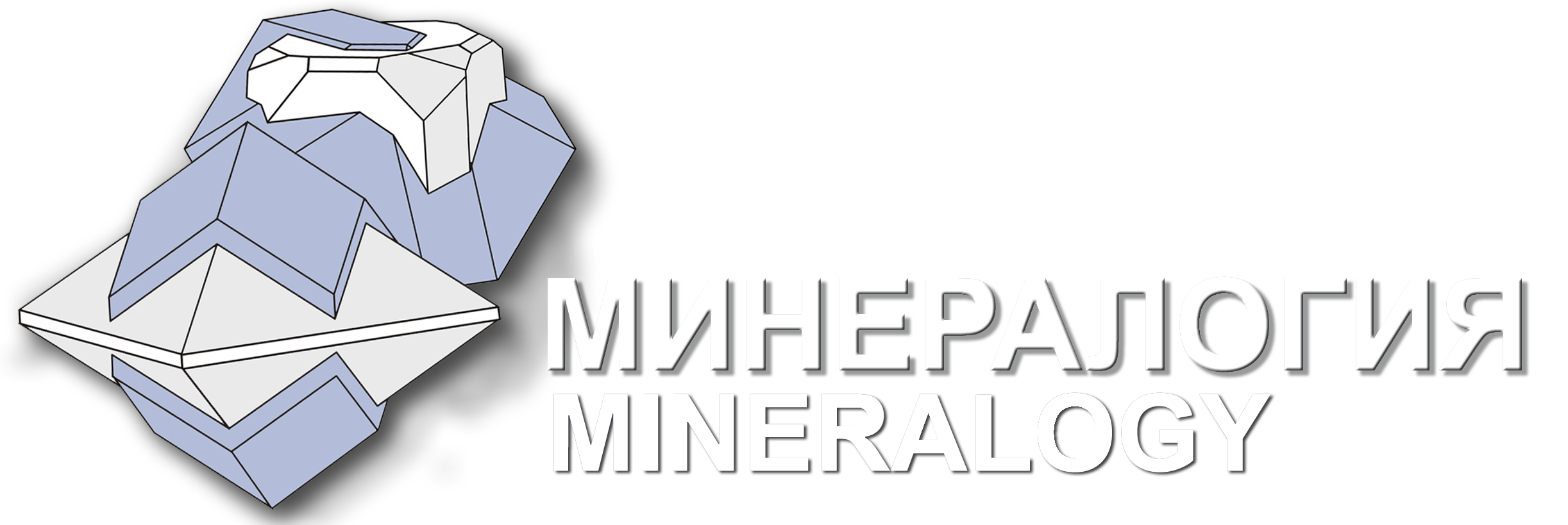- General questions of mineralogy and crystallography
- Minerals and mineral assemblages
- History of mineralogy
- Mineralogy of mineral deposits, problems of genesis of ore deposits
- Ecological mineralogy and ecogeochemistry
- Mineralogy of technogenic objects
- Archeological mineralogy
- Biomineralogy
- Reviews and discussions
Articles in Mineralogy are indexed by the following systems:
- Russian Scientific Citation Index (RSCI) – a database, accumulating information on papers by Russian scientists, published in native and foreign titles. The RSCI project is under development since 2005 by “Electronic Scientific Library” foundation (eLibrary.ru). Two-year RSCI impact factor of the Journal including citing from all sources is 0.404.
- Russian State Library is a national library of the Russian Federation and the largest public library in Russia and the second largest world library positioned in Moscow. Since January 2017, the Russian State Library started to receive electronic legal deposit copies of printed publications and dissertation theses.
- CyberLeninka is a scientific electron library based on an Open Science paradigm, the main tasks of which include popularization of science and scientific activity, public control of quality of scientific publications, development of interdisciplinary studie and peer-review process, increase in citing of Russian science and creation of knowledge infrastructure.
- Crossref is a nonprofit open digital infrastructure organization for the global scholarly research community. Uniquely and persistently recording and connecting knowledge through open metadata and identifiers for all research objects such as grants and articles. It is the largest digital object identifier (DOI) Registration Agency of the International DOI Foundation.
- Google Scholaris a freely accessible web search engine that indexes the full text of scholarly literature across an array of publishing formats and disciplines. The Google Scholar index includes most peer-reviewed online journals of Europe and America’s largest scholarly publishers, plus scholarly books and other non-peer reviewed journals.
License agreement and copyright policy
The legal basis for ensuring publication ethics in Mineralogy is provided by international standards, including the provisions adopted by the 2nd World Conference on Integrity in Scientific Research (Singapore, 22–24 July 2010); and the regulations developed by the Committee on Publication Ethics (COPE) and norms of Chapter 70 “Copyright” of the Civil Code of the Russian Federation.
Materials in Mineralogy are available under license Creative Commons Attribution International 4.0 CC-BY, which allows unlimited use of the work, subject to attribution. All users can read, download, copy, distribute, print, search, or link to the full text of the papers published in Mineralogy and guarantee the original authors the right to be properly acknowledged and cited.
Open-access statement
Mineralogy is an open access journal, which means that all content is freely available without charge to the user or his/her institution. Users are allowed to read, download, copy, distribute, print, search, or link to the full texts of the articles, or use them for any other lawful purpose, without asking prior permission from the publisher or the author. This is in accordance with the Budapest Open Access Initiative (BOAI) definition of open access.
Confidentiality policy
All manuscripts submitted to Mineralogy are confidential prior to their publication. The editors and reviewers are not allowed to share or discuss any details of the manuscripts under consideration with third parties outside of the editorial or review process. Confidential data or ideas obtained through editorial or peer-review process cannot be distributed in any format or used for personal advantage.
Plagiarism policy
Mineralogy publishes only original articles. Submitting the manuscript, the authors should ensure that it has not been published before, has not been submitted to other journal and all data taken from other works (of both the author of the submitted manuscript and other authors) have been appropriately cited or quoted.
The submitted manuscripts in Russian are checked for plagiarism using an Antiplagiat system (https://antiplagiat.ru/about/). The manuscripts submitted in English are checked using Google Scholar (https://scholar.google.ru/scholar?start=10&q=2313-545X&hl=ru&as_sdt=0,5).
Author fees and funding
Submission, peer-review process, editing and publication of articles in Mineralogy are free of charge for all authors. Publishing of Mineralogy is supported by the publisher’s funds. No rewards are envisaged for the authors.
Data retention and archiving policy
Information about all articles published in Mineralogy including PDF versions of all articles and full issues of the Journal can be found on official websites of the Journal (https://journal.mineralogy.ru), Scientific Electronic Library (eLibrary.ru) (https://www.elibrary.ru/title_about_new.asp?id=54749), and Scientific Open Access Library CyberLeninka (https://cyberleninka.ru/search?q=2313-545X&page=1).
According to the Federal Law № 2124-1 of December 27, 1991 (in the version of 14.07.2022) “About Mass Media”, the mandatory copies of new issues of Mineralogy are downloaded within 7 days after the publication to web-sites of The Information Telegraph Agency of Russia (ITAR-TASS, https://online.bookchamber.ru/) and The Russian State Library (https://oek.rsl.ru/).
Authors can store their articles published in Mineralogy on personal web-sites or publish them in any suitable databases indicating the title and the issue of Mineralogy, where the article was initially published. The authors are encouraged to use the publisher’s PDF version of the article or provide a link from the deposited version to the URL/DOI of the published article on the official website of Mineralogy.
Privacy policy
Personal information about the authors (first name, surname, affiliated organization and its address, e-mail), which is included in published articles, become available to everybody. Authors provide consent to the processing of the aforementioned types of personal data, when they submit their manuscripts and related materials for publication. Personal data are published for correct accounting and citation of the published articles and in order to ensure proper interactions between the journal’s authors and the other members of scientific community.
Additional personal information (e.g., phone numbers and additional e-mails) received from the authors is only used to keep contact between the author and the editorial board during the preparation of the manuscript to publishing. The editorial board does not share this personal information with third parties outside of the editorial process.
Publication Ethics
The Editorial Board of Mineralogy guarantees the authors the compliance with ethics of publishing, authorship, peer-review process and editing of scientific publications submitted. The policy of the Editorial Board is based on respect of the author’s personal rights and intellectual property. The Editorial Board guarantees independent and conscientious peer-review process of all submitted manuscripts.
Ethics of publishing of scientific publications
The Editorial Board
– guarantees the consideration of all manuscripts submitted for publication and the objective decisions without prejudice to authors based on their national or religious affiliation or official position, their commercial interests and relations with the founder of the Journal, respecting the author’s personal and intellectual property rights;
– ensures and improves the quality of published materials;
– determines the degree of relevance, importance, clarity, reliability, and validity of the manuscripts submitted for publication;
– attracts highly qualified scientists to the Editorial Board, who actively contribute to the development of the Journal;
– improves a system of peer-review process and editing of publications guaranteeing the accuracy, completeness, and clarity of the manuscripts submitted to publication and their prompt publication;
– informs the readers on funding of published materials;
– checks the submitted manuscripts for duplicate texts, figures and tables, which could have already been published by the authors;
– decides whether or not to accept the manuscript for the publication on the basis of the opinion of independent reviewers.
The high quality of the submitted manuscript should meet the following standards:
– the results provided in the submitted manuscript must be in accordance with generally accepted scientific standards; authors have a collective responsibility for their study and the content of the publication;
– the authors must present their results without fabrication, falsification or dishonest manipulation of scientific data;
– the publication must provide sufficient information to allow other researchers to replicate the experiments;
– the results of new study must be presented on the basis of previous results;
– the authors guarantee that the study is original and its results have not previously been published elsewhere in any language; the manuscript cannot be submitted to several journals;
– the authors must acknowledge all funding sources (including direct and indirect), analytical centers with used equipment, and those who provide the materials for studies (if they are not the co-authors of the manuscript) or other types of technical support.
Authorship ethics of scientific publication
The authors of the submitted manuscript must
– ensure that only those who made significant contributions to the study are included as co-authors and those who deserve the co-authorship are not excluded;
– agree to be a co-author and must approve the revised version of the manuscript; any changes to the co-authorship must be approved by all authors, including those who are excluded from the co-authorship;
– collaborate with editors to correct their manuscript as soon as possible;
– immediately notify the editors in case of errors in papers, which are submitted and accepted for publication or already published;
– not simply copy references from other publications without their careful reading; the references to other published papers must be accurate and formatted in accordance with the requirements of Mineralogy;
– refer correctly and accurately to previously published papers; the direct reproduction of previous papers of the authors and their paraphrasing are unacceptable: they can be used only as a basis for new conclusions;
– must comply with a copyright law: indicate the authorship of data, text, figures, and ideas taken from other sources; direct quotations from other papers must be put in quotes with a corresponding reference; tables, figures or large quotations must only be reproduced with the permission of their owners.
Ethics of peer-review process
The Editorial Board guarantees the independent review of the submitted manuscripts ensuring the honesty and objectivity of the decision about a scientific value of the submitted manuscript. The Editorial Board invites the qualified reviewers without conflict of interests with the authors of the submitted manuscript. The authors could suggest the possible reviewers for their papers; however, this does not mean that these reviewers will agree to join the review process. The reviewers are informed of the requirements of the peer-review process. The Editorial Board ensures the confidentiality of the authors’ data and maintains the confidentiality of the authors and reviewers. The Editorial Board does not inform anyone about the status of the manuscript in Mineralogy except the authors.
The personal data of the reviewers are confidential as well. The reviewer can refuse its anonymous status and contact the authors to better improve the quality of the paper. The reviews are immediately sent to the authors. The revised manuscripts could be evaluated again by the same reviewers. If the authors disagree with the reviewer’s decision, the Editorial Board can invite more reviewers to assess the quality of the manuscript. The Editorial Board can reject the manuscript before the peer-review process if the manuscript is of low quality or seems unsuitable for the Journal. The Editor’s-in-Chief decision is final.
Ethics of editing
All manuscripts, which are accepted to publishing in Mineralogy after the peer-review process, are subject to scientific and language editing by the Editorial Board members. The results of editing are aligned with the authors. To minimize the editing process, the authors of the submitted manuscripts are encouraged to use an understandable logical style of writing based on the rules of Russian or English languages. The authors should avoid verbosity and excessive using of adverbs and language constructions, which increase the volume of the manuscript, but does not affect its sense (e.g., however, unfortunately, as was mentioned above, probably, in other words, in opinion, etc.).
Retraction of manuscripts
In case of violation of publishing ethics in already published papers, the Editorial Board of Mineralogy can retract the papers following the Rectraction guidelines of COPE and (https://publicationethics.org/node/19896) and the Association of Scientific Editors and Publishers (ANRI) (https://rassep.ru/sovet-po-etike/retraktsiya/). The paper is subject to retraction if it
- constitutes plagiarism;
- presents falsified or fabricated data (e.g., falsified or fabricated experimental or calculated data);
- contains serious errors, e.g., erroneous interpretation of results;
- includes the authors, who do not meet criteria for the authorship, and vice versa (the authors, who made a significant contribution, are excluded from the paper);
- the authors of the paper have conflict of interest;
- presents the data without permission of author (authors);
- contains any other violations of publishing ethics.
Rectraction of the published paper is issued by the Editorial Board of Mineralogy on the basis of the Editor’s-in-Chief decision, which contains a substantiated data on the reasons of the retraction. The protocol copy of the substantiated retraction decision (in case of plagiarism, the protocol must contain the plagiarism sources) and retraction date are sent to the corresponding author of the paper. The authors could disagree with the decision of the Editorial Board of Mineralogy, however, the Editorial Board of Mineralogy has rights for the rectraction procedure.
The retraction decision takes into account the author’s response, which substantiate the author’s opinion. If the author ignores the request on the retraction procedure, the Editorial Board of Mineralogy can appeal to the Commission on Publishing Ethics of ANRI and/or retract the paper without author’s opinion. If the authors would like to retract their paper for any reasons mentioned above, they cooperate with Editorial Board of Mineralogy providing a steady reason for the retraction.
After the procedure of retraction is completed, the paper and its metadata remain on web-site of the Journal within a corresponding issue with a note “RETRACTED” and the date of retraction (the same note is included into the Content of the corresponding issue of Mineralogy). After the retraction, the Editorial Board of Mineralogy notifies the Committee on Publishing Ethics of ANRI, National Electron Library (eLibrary.ru) and other Russian information resources to include the retraced paper into the corresponding database.
Conflict of interests
The authors should disclose in their manuscript any conflicts of interest that might be construed to influence the results or interpretation of their manuscript or declare the absence of conflict of interests in a corresponding section at the end of the manuscript.
Unpublished data from the submitted manuscripts cannot be used in personal studies without the permission of the author(s). Information or ideas, which are recovered by reviewers or editors during the peer-review or editing process and which are related to possible benefits for the reviewers or editors, must remain confidential and not be used for a personal gain.
The reviewers must reject the peer-review process of the submitted manuscripts in case of the conflict of interests related to competitive, collaborative or other interactions and relationships with any of the authors, companies or other organizations related to the submitted manuscripts.
Relations with readers
Information about Mineralogy and Editorial Board activities is published on the official website of Mineralogy. The Editorial Board undertakes to operatively make necessary changes at the website. The readers have a free access to the published papers of Mineralogy and can download the papers for personal use only. Reprinting, duplication, and partial or verbatim use of papers without the permission of the authors or editors are prohibited.
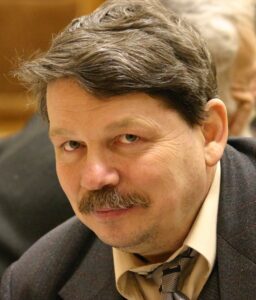
Valery MASLENNIKOV
Corresponding Member of the Russian Academy of Sciences, Professor, Laureate of the Russian Government Prize.
Valery Maslennikov was born on May 14, 1958 in Nizhny Tagil, Sverdlovsk region. In 1980, he graduated from the Sverdlovsk Mining Institute with a degree in Geological Survey, Prospecting, and Exploration of Mineral Deposits. In 1986 he defended the thesis “Stratigraphic and lithological control of massive sulfide ores” for the degree of the Candidate of Geological and Mineralogical Sciences. Since 1986 Valery Maslennikov is working at the Laboratory of Applied Mineralogy and Ore Genesis (now the Laboratory of Mineralogy of Ore Genesis) of the Institute of Mineralogy, Urals Branch,and Russian Academy of Sciences. In 1997, he defended the dissertation “Sedimentogenesis, halmirolysis, and ecogenesis of massive sulfide paleohydrothermal fields” for the degree of the Doctor of Geological and Mineralogical Sciences.
Valery Maslennikov is an internationally recognized specialist in metallogeny, lithology, mineralogy, geochemistry, and paleoecology of massive sulfide deposits. He has published more than 420 papers, including 18 monographs. His main scientific direction is related to the study of mineralogy of ore facies of volcanic-hosted massive sulfide (VHMS) and iron deposits and the elaboration of mineralogical and geochemical theories of lithogenesis of sulfide, oxide–iron, and manganese deposits from modern and ancient oceans.
The main scientific achievement of Valery Maslennikov is the development of a combined theory of lithogenesis and formation of VHMS deposits including the interaction between sedimentogenesis, halmirolysis, diagenesis, and biogenesis. Based on this theory, he developed new lithologic criteria for the forecasting the VHMS deposits.
Valery Maslennikov developed the methods of ore-facies analysis of VHMS deposits and mapping of VHMS-bearing paleohydrothermal fields in intra-arc rifts. His theory of halmirolysis and lithogenesis of polygenic sulfide, oxide-iron, and manganese deposits explains the causes of morphogenetic, ore-facies, lithological, paleoecological, and mineralogical-geochemical diversity of sulfide deposits in relation to different geotectonic settings, volcanism, and sedimentation regimes in comparison with black and gray smokers of modern oceanic rifts and island-arc basins. A multistage mineralogical-geochemical model of the formation of gold deposit in sedimentary rocks was substantiated on the basis of the results of laser ablation inductively coupled plasma mass spectrometry (LA-ICP-MS). In massive sulfide ores of the Uralian and Pontide VHMS deposits, Valery Maslennikov discovered the new species and genera of the Paleozoic and Mesozoic estuary biota, which is the ancient analogs of modern hydrothermal oases, and elaborated the criteria for the identification of fossilized fauna.
Valery Maslennikov is a leader of scientific studies in Russia supported in various years by Russian and international projects (ISF, INTAS, TACIS, DAAD, MinUrals INCO COPERNICUS, UNESCO IGCP-502, AMIRA, Presidium of the Russian Academy of Sciences, Russian Fund for Basic Research, Russian Science Foundation). He organized several international field expeditions in the Urals.
In 2003, as part of a team of scientists, Valery Maslennikov was awarded by the Prize of the Government of the Russian Federation in Science and Technology for the elaboration of scientific fundamentals for the development of ore mineral resource base of the Urals.
Valery Maslennikov pays much attention to educational activities and supervises Russian and foreign graduate students. He heads the Department of Geology at the Faculty of Geology of the South-Urals State University and lectures on the course “Geology of Mineral Deposits”. He was a supervisor of two theses for the degree of the Candidate of Geological and Mineralogical Sciences.
Valery Maslennikov is a member of the Presidium of the Urals Branch of the Russian Academy of Sciences SGA, SEG, IMA, and the Editorial Board of the Journal “Litosfera” (Lithosphere). He was invited as a lecturer and research professor to the Universities of Brest (France), Tasmania (Australia), and Freiberg Mining Academy (Germany).
He is also the laureate of the B. Skinner International Award (2011), Australian Museum Eureka International Award (2016), and A.N. Zavaritsky Medal of the Urals Branch of the Russian Academy of Sciences (2021).
 | Editor-in-Chief Valery Maslennikov, Corresponding Member of the Russian Academy of Sciences Key researcher at the South Urals Federal Research Center of Mineralogy and Geoecology UB RAS, Miass, Russia. Full Professor at the Faculty of Geology, South Urals State University, Miass, Russia Expert in metallogeny, lithology, mineralogy, geochemistry, and paleoecology of volcanic-hosted massive sulfide and iron deposits, who developed a theory of lithogenesis of volcanic-hosted massive sulfide deposits showing the interaction of sedimentogenesis, halmirolysis, diagenesis, and biogenesis during their formation. He first substantiated the similarity between the Urals volcanic-hosted massive sulfide deposits and modern hydrothermal sulfide fields. Laureate of the Prize of the Government of the Russian Federation (2004), B. Skinner International Award (2011), Australian Museum Eureka International Award (2016), and A.N. Zavaritsky Medal of the Urals Branch of the Russian Academy of Sciences (2021). Author and co-author of 420 scientific papers, including 18 monographs. H-index: 22 (Web of Science), 28 (Scopus), 34 (Russian Science Citation Index = RSCI). |
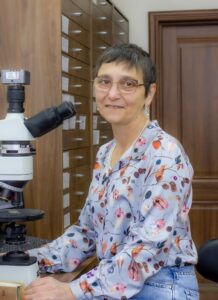 | Co-Editor Elena Belogub, Doctor of Geological and Mineralogical Sciences Key researcher at the South Urals Federal Research Center of Mineralogy and Geoecology UB RAS, Miass, Russia Expert in mineralogy of various ore deposits and methods of mineralogical analysis, who developed the basis for a theory of supergenesis of massive sulfide deposits on example of the South Urals, revealed the principles of the formation of selenides in a supergene profile of massive sulfide deposits and thermodynamically substantiated their formation, as well as systematized the data on the distribution of sulfates in the Urals. Author and co-author of the discovery of seven new minerals and more than 300 published papers (including 31 indexed in the Web of Science database) and 3 monographs. |
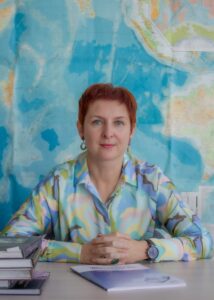 | Responsible Editor Irina Melekestseva, Candidate of Geological and Mineralogical Sciences Leading researcher at the South Urals Federal Research Center of Mineralogy and Geoecology UB RAS, Miass, Russia Scientific interests are related to ancient massive sulfide deposits and modern hydrothermal sulfide fields. Irina Melekestseva examined the structure and mineral composition of the South Urals Co-bearing massive sulfide deposits associated with ultramafic rocks, the role of diagenesis in the transformation of ancient and modern sulfide breccias, magmatic contribution to the formation of Cu–Zn massive sulfides from several hydrothermal sulfide fields enriched in Au and Ag, the enrichment of secondary sulfides in trace elements, and similarity of lithogenesis of Paleozoic and Cenozoic barite-bearing pyrite ores. Author of 41 papers in peer-reviewed journals (including 32 papers in the Web of Science) and co-author of 5 monographs. H-index: 12 (Web of Science), 12 (Scopus), 15 (RSCI). ORCID |
| Associated Editors | |
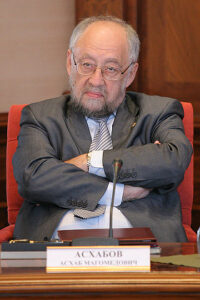 | Askhab Askhabov, Academician of the Russian Academy of Sciences Key researcher at the Institute of Geology, Komi Scientific Center UB RAS, Syktyvkar, Russia Expert in theoretical and experimental mineralogy, mineralogical crystallography, and crystallogenesis, who founded a new direction in crystallography and crystallogenesis, determined the principles of growth of artificial crystals at the regeneration stage, proposed new methods for rational use of natural crystal raw materials, synthesis of crystals, and regulation of their properties, contributed to the genetic interpretation of crystal growth characteristics and to the disclosure of the conditions of natural crystal formation, and developed new morphological, crystallophysical, and anatomical indicators of the genesis of diamond, beryl, quartz, and other minerals. Author and co-author of more than 200 scientific papers, including 15 monographs. |
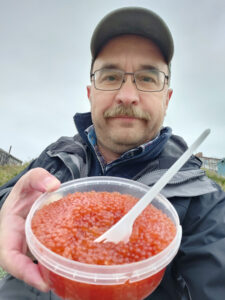 | Alexei Brusnitsyn, Doctor of Geological and Mineralogical Sciences Professor at St. Petersburg State University, St. Petersburg, Russia Expert in mineralogy, geochemistry, formation conditions, and metamorphism of ore-bearing deposits in sedimentary and volcanosedimentary complexes, as well as the deposits of semi-precious stones. Laureate of the Russian Federation President’s Prize in area of education (1997). Member of the Scientific Council of the Russian Mineralogical Society (RMO). Member of the Council of GU 212.224.04 for the defense of doctoral and candidate thesis at the National Mineral Resources University “Gorny”. Author and co-author of more than 90 scientific papers. |
 | Irina Galuskina, PhD Professor at University of Silesia, Sosnowiec, Poland Specialist in crystallography and mineral spectroscopy. Author and co-author of the discovery of 34 new minerals (data of 2013). A new mineral, haluskinite, was named in honor of her great contribution to mineralogy of skarns. H-index: 21 (Scopus). |
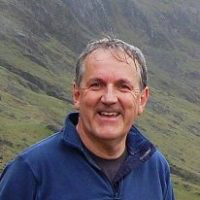 | Richard Herrington, PhD Professor, Head of Earth Sciences Department at the Natural History Museum, London, UK Expert in formation processes of various mineral deposits and geodynamic evolution of Earth. Author and co-author of more than 400 published papers, including 68 articles in the Web of Science database. H-index: 32 (Scopus). |
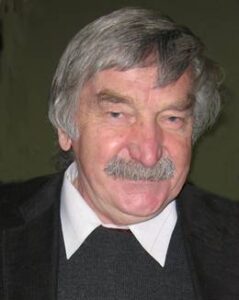 | Vladimir Krivovichev, Doctor of Geological and Mineralogical Sciences Professor at St. Petersburg State University, St. Petersburg, Russia; Mercator Professor, Kiel, Germany Expert in mineralogy, geochemistry, and genesis of rare-metal deposits associated with granitoid magmatism. Vladimir Krivovichev developed a concept of mineral systems and their application to the study of the evolution of mineral diversity. Author and co-author of more than 300 published papers (20 papers in the Web of Science database) and more than 25 monographs and textbooks. |
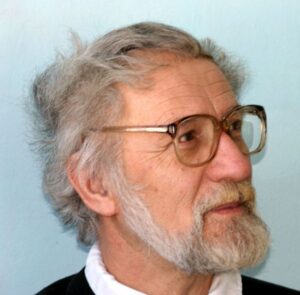 | Evgeny Makagonov, Candidate of Geological and Mineralogical Sciences Researcher at the South-Urals Federal Research Center of Mineralogy and Geoecology UB RAS, Miass, Russia Expert in crystallography, mineralogy of various deposits, and mineralogical mapping. His studies were related to the development of a substantial-axiomatic theory of the structure of aggregations and transformations of minerals, symmetry of mineral indivisible aggregates, and affine homology of crystals. Author of more than 100 published papers. |
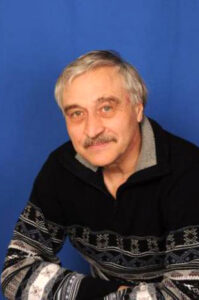 | Valery Murzin, Doctor of Geological and Mineralogical Sciences Key researcher Institute of Geology and Geochemistry UB RAS, Yekaterinburg, Russia Expert in mineralogy, geochemistry, and genesis of gold deposits. He made a significant contribution to the theory of mineral typomorphism, as well as to one of the most serious problems of ore genesis: the identification of sources of fluids and ore substance, and the improvement of scientific methods of the forecasting and prospecting of gold deposits. Author and co-author of 375 papers, including scientific journals indexed in Web of Science database. |
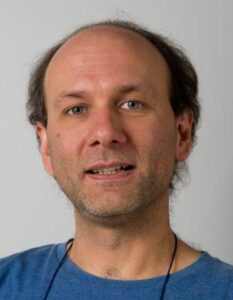 | Paolo Nimis, PhD Professorat University of Padova, Italy Expert in crystal chemistry of rock-forming minerals, crystallochemical properties, formation conditions, geochemical properties, and their application to petrological, geological, and ore deposits. He has made significant contributions to the studies of thermobarometry of mafic and ultrabasic rocks and diamond inclusions, geochemistry of mantle rocks, and their relation to the diamond potential of kimberlites. He also studies volcanogenic massive sulfide deposits compared with modern seafloor mineralization. He is a leading specialist in copper metallogeny of the Alpine fold region and its archeometry. Author of more than 90 published papers in international journals. H-index: 31 (Scopus). |
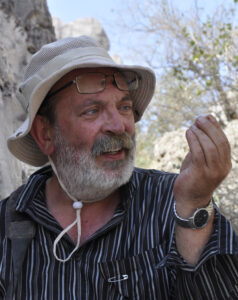 | Leonid Pautov Senior researcher at the Fersman Mineralogical Museum RAS, Moscow, Russia Expert in mineralogy and crystallography of the Dara-i-Pioz alkaline pluton (Tajikistan), skarn deposits of the Inylchek Ridge (Kyrgyzstan), and pegmatites of the Ilmeny Mountains (South Urals). Author and co-author of discovery of more than 40 new minerals (as of 2017) and 48 published papers (Web of Science). The mineral pautovite was named in his honor. |
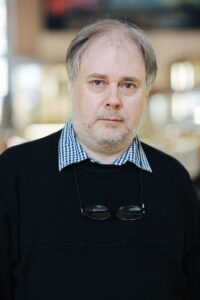 | Igor Pekov, Corresponding Member of the RAS Professor at Moscow State University, Moscow, Russia Expert in mineralogy and geochemistry of alkaline postmagmatic systems, granitic pegmatites, exhalation post-volcanic processes, and supergene zone of chalcogenide deposits, as well as mineralogy, geochemistry, and crystallochemistry of rare elements, zeolite-like minerals and synthetic compounds. Author and co-author of the discovery of 202 new minerals (as of 2016) and more than 550 published papers, 429 of which are indexed in Web of Science and Scopus. |
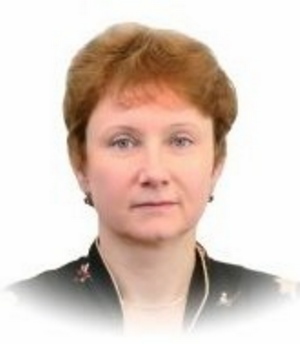 | Ellina Sokol, Doctor of Geological and Mineralogical Sciences Key researcher at the Institute of Geology and Mineralogy SB RAS, Novosibirsk, Russia |
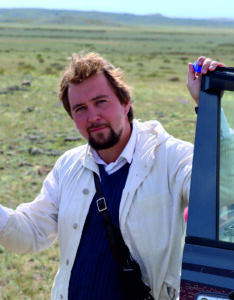 | Sergei Stepanov, PhD, Researcher Senior researcher at the South Urals Federal Research Center of Mineralogy and Geoecology UB RAS, Miass, Russia |
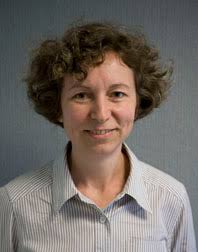 | Svetlana Tessalina, PhD Head of the Radiogenic Isotope Research Unit, John de Laetare Research Center, University of Curtin, Perth, Australia The research interests are related to chemical and temporal evolution of the Earth’s lithosphere and associated mineral deposits, the development of Re–Os and Sm–Nd isotope systematics for VMS and gold deposits, which are used to improve the accuracy of geochronology and stratigraphy, and Sm–Nd isotope mapping technology for geologic terranes. Author and co-author of more than 300 published papers, including 42 articles in the Web of Science database. H-index: 20 (Scopus). |
 | Valery Udachin, Doctor of Geological and Mineralogical Sciences Director of the South Urals Federal Research Center of Mineralogy and Geoecology UB RAS, Miass, Russia Expert in geochemistry of mining and industrial technogenesis and mechanisms of migration and accumulation of technogenic, including toxic, chemical elements. The main topics of his study are related to the development of a theory of ecogeochemistry of mining and industrial technogenesis in the South Urals. For the Karabash and Mednogorsk geotechnical systems, he revealed the distribution and mode of occurrence of toxic elements in natural environment (soils, lake floor sediments, etc.). Author and co-author of more than 80 published papers. |
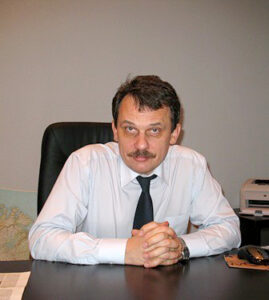 | Yury Voitekhovsky, Doctor of Geological and Mineralogical Sciences Professor at Herzen University, St. Petersburg, Russia Expert in geology and mineralogy of ore deposits of the Kola Peninsula, mainly kyanite and Cu–Ni deposits with platinoids. Yury Voitekhovsky develops three scientific directions at the interface of natural and mathematical sciences: systematic combinatorial-geometric analysis of (i) polyhedral structures, including fullerenes and their analogs and (ii) real crystallographic simple forms in connection with a Curie dissymmetry principle and structural analysis of crystalline rocks as a space with different topologies and non-Euclidean metrics. Author of more than 300 published papers, including 5 monographs. |
 | Sergey Votyakov, Academician of the Russian Academy of Sciences Key researcher at the Institute of Geology and Geochemistry UB RAS, Yekaterinburg, Russia Expert in mineral physics and material science, who made a significant contribution to the development of modern concepts of mineral spectroscopy, obtained original results in point defects of structure of minerals, traced the dynamics of changes in the defectness of the structure under various thermodynamic and radiation effects in natural and model environments, proposed mechanisms of the formation and transformation of defects, and determined their relationship with physical and chemical properties and the environment of mineral formation. Author and co-author of more than 350 published papers (44 in Web of Science), including 8 monographs. |
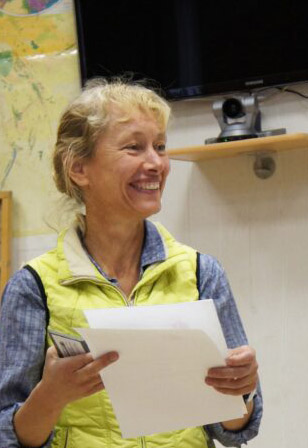 | Marina Yudovskaya, PhD Leading researcher at the Institute of Geology of Ore Deposits, Petrography, Mineralogy, and Geochemistry RAS, Moscow, Russia; researcher at the School of Geosciences, University of Witwatersrand, Johannesburg, South Africa Expert in geology and geochemistry of ore deposits, ore mineralogy, petrology of igneous rocks, economic geology, isotopic studies of ore systems, including platinum group elements (PGE) in chromitites, ore mineralization of the Bushveld complex (South Africa), unconventional PGE sources in gold-bearing black shale deposits, gas transport of metals in natural settings of high-temperature fumaroles, isotopic dating of ore mineralization, and PGE behavior in hydrothermal systems. Author and co-author of more than 100 published papers. |
Editorial Staff:Layout of papers and publishing of issues Proofreading |
Peer-review process: guidelines for reviewers
To maintain high scientific standards, all manuscripts submitted to Mineralogy are subject to a peer-review procedure. The review process aims to evaluate the manuscripts for publication and to offer recommendations for their improvement. The manuscripts are preliminary assessed by Editor-in-Chief, Co-Editor or Responsible Editor for their suitability for Mineralogy. The peer-review process in Mineralogy obeys the following criteria.
- The reviewers are suggested by Editor-in-Chief, Co-Editor or Responsible Editor. The manuscripts considered suitable are sent to two reviewers, one of which is a member of the Editorial Board. The reviewers cannot be affiliated with the organizations of the authors. The names of the authors are known for the reviewers, but the reviewers are anonymous for the authors, which is a single anonymized review type.
- In most cases, the manuscripts are sent to the authors for the revision. The revised manuscripts could again be evaluated by the reviewers if necessary.
- If the authors disagree with the opinion of the reviewers, the manuscript can be sent to another reviewers. The final decision on the publication is made by Editor-in-Chief.
- In case of rejection of the manuscript, the authors are notified by the Editor’s-in-Chief letter. The Editorial Board does not engage in discussions with the authors of rejected articles.
- The copies of the reviews are sent to the authors. The original reviews are stored at the editorial office for five years from the date of the publication and are provided to the Ministry of Science and Higher Education of the Russian Federation upon a request.
- The revised manuscript must be corrected using a Review mode in a word processor. The authors must also present a response to the reviewer’s comments.
- The Editor’s-in-Chief decision on the publication is final. The manuscript prepared for publication is sent to the authors for their consideration and approval of editing. In case of significant changes of the manuscript at this stage, it can be reviewed again.
Requirements for the review
The reviewers should objectively evaluate the manuscript and provide a comprehensive analysis of its scientific and methodological merits and shortcomings. The volume of the review is unlimited. The reviewers are asked to return their feedback within three weeks after the acceptance of the invitation to the review process.
The review should evaluate the relevancy, urgency, scientific novelty, theoretical and practical significance, main results and conclusions of the study, and the quality of presentation including the whole artwork and the structure of the manuscript.
In conclusion, the review should provide recommendations on the possibility of publication of the manuscript: in the present or revised form or the manuscript is inappropriate for the publication in the Journal.
Privacy, confidentiality and informed consent policy
Manuscripts must be reviewed with respect for the authors’ confidentiality. In submitting their manuscripts for the review, the authors entrust the editors with the results of their scientific work and creative effort, on which their reputation and career may depend. Authors’ rights may be violated by disclosure of confidential details during the review of their manuscript. Reviewers also have rights to confidentiality, which must be respected by editors.
Editors must not disclose information about the manuscripts (including their receipt, content, status in the reviewing process, criticism by reviewers, or ultimate fate) to anyone other than the authors and reviewers. This includes requests to use the materials for legal proceedings.
Editors must make clear to their reviewers that the manuscripts sent for review are the private property of the authors. Therefore, the reviewers and members of the editorial staff must respect the authors’ rights by not publicly discussing the authors’ work or appropriating their ideas before the manuscript is published. Reviewers are not allowed to make copies of the manuscript for their files and are prohibited from sharing it with others, except with the editor’s permission. Reviewers should return or destroy copies of manuscripts after submitting reviews. Editors should not keep copies of the rejected manuscripts.
Reviewer comments should not be published or otherwise publicized without permission of the reviewer, author, and editor. Reviewers’ comments could be sent to other persons reviewing the same manuscript, which helps the reviewers learn from the review process. Reviewers also may be notified about the editor’s decision on the acceptance or rejection of the manuscript.
Official address
South Urals Federal Research Center of Mineralogy and Geoecology UB RAS, territory of the Ilmeny State Reserve, Miass, Chelyabinsk region, 456317 Russia
E-mail:
journal-mineralogy@yandex.ru
